Cold Brew Vs. Espresso (Key Differences)
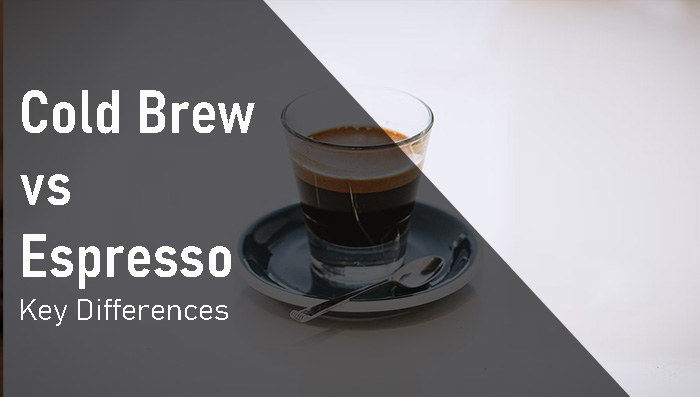
Are you fond of having coffee as soon as you wake up in the morning? As a coffee lover, you must be aware of the different kinds of ways you can brew your coffee beans—for example, cold brew, hot brew, iced latte, espresso, iced espresso drinks, etc.
Talking about cold brew and espresso, both may seem similar, but they could not be more different!
There are many differences between these two coffee drinks, but the main difference is right here.
A cold brew is made when you steep the coffee for 12 to 24 hours in cold water, while espresso requires hot water to soak for only 25-35 seconds.
In this article, we will discuss in detail what espresso and cold brew are, how to make them, and some primary differences between the two coffee drinks. So, let’s begin with cold brew vs. espresso!
Related Read: DIFFERENT TYPES OF COFFEE
Cold Brew Vs. Espresso at a Glance
For a quick understanding, let us have a look at the following comparison table for Cold brew vs. Espresso:
| Comparison | Cold Brew | Espresso |
| Flavor | Sweet, smooth, and light | Strong, nutty, vibrant, and concentrated |
| Caffeine content | 245-250 mg in 16 ounce cup | 67-60 mg in 2 ounce cup |
| Grinding size | Taste best with coarsely grind coffee beans | Tastes best with fine grind coffee |
| Brewing time | 12-24 hours | 25-35 seconds |
| Roast level | Blonde to dark roast | Dark roast |
| Acidity | Less acidic | Medium acidic |
| Water temperature | Cold or room temperature water | 90-95 degrees Celsius |
What is Cold Brew?
Kyoto, Japan, is the home of cold brew coffee. For a single cup of Kyoto cold brew, the coffee is extracted by a slow drip method, which can take up to 12-24 hours.
Basically, as the name suggests, cold brew coffee is coffee brewed with cold water instead of hot water. As a result, there is a significant difference in this coffee’s flavor profile and caffeine content compared to traditional coffee.
The ratio of coffee to water for making cold brew coffee also is different from traditional coffee. The coffee should also be steeped for at least 12 hours (ideally 24 hours).
Cold brew coffee can be enjoyed black or flavored with milk, sugar, or other flavors once it has finished the brewing process.
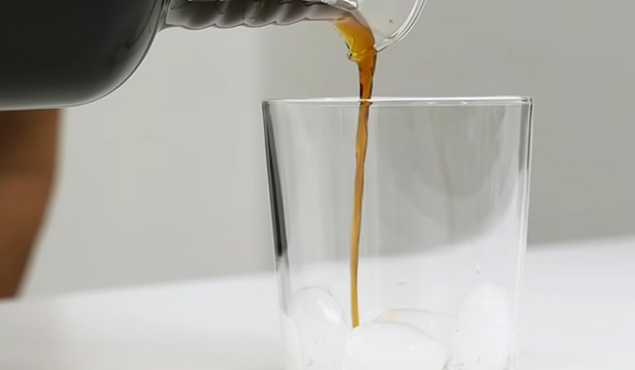
How to make cold brew?
A French press is one of the handiest coffee makers to make a cold brew.
The Recipe:
To make cold brewed coffee, all you need to do is:
- Add the coarse grounds of coffee to the French press.
- Now, add cold water while stirring.
- After that, put the pitcher or the glass carafe of the French press in the refrigerator to brew for 12-24 hours.
- When the time is up, strain the brew into the mug through a sieve or a cheesecloth. A paper towel would also work the same as a cloth.
- Serve the coffee cold, or add some ice on a hot summer day!

What is Espresso?
Turin was the first city in Italy to create espresso in the late 19th century. Throughout the world, espresso has become a popular coffee drink, and it is now one of the most famous coffee types in Italy and Eastern Europe than anywhere else.
Espresso is a popular coffee variation made by passing hot water through fine-grind coffee beans. It has one of the shortest brewing times compared to other coffee brewing methods, thus resulting in a concentrated and more robust coffee flavor.
Espresso drinks are typically served in tiny glass tumblers (call them shots). They can be enjoyed as black coffee or used as a base in multiple beverages like cappuccinos, lattes, etc.
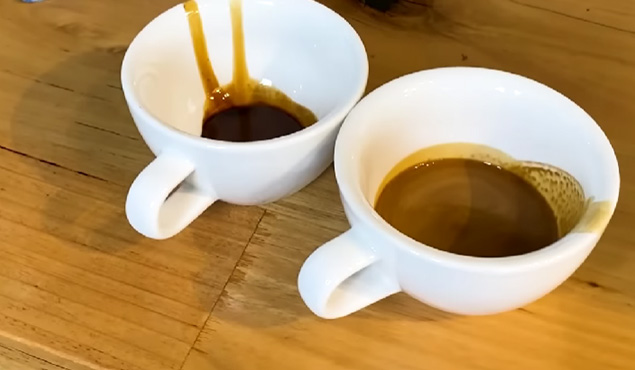
How to make espresso?
To make an espresso, you might need an espresso machine, but it can also be brewed in a moka pot or even a French press. However, there would be a noticeable difference in the flavor of machine coffee and the drink made in the moka pot or French press.
The Recipe
Here is what you need to do if you are brewing coffee in an espresso machine:
- First, add the finely-ground coffee beans to the portafilter.
- Now, add hot water (up to 95 degrees Celsius), and stir.
- Next, start with the brewing, using pressure.
- When you fill 2 oz of your cup, stop your espresso machine.
- Serve immediately.
The key differences in Cold brew vs. Espresso
The comparison table above taught you a few quick differences between cold brew and espresso. Now, let us elaborate on those distinctive factors for a better understanding.
Taste/Flavor
In comparison to hot brewed coffee that has been cooled, cold brew tastes very different. In this coffee, the acidity is much lower, the flavors are more ‘black’ (ranging from chocolatey to nutty and earthy), and the aroma is less nuanced.
Alternatively, a properly prepared espresso tastes rich and full of flavor. It has a strong acidity but a well-balanced taste. Despite the sharpness, a hint of bitterness provides a rich undertone flavor to a traditional espresso drink.
In terms of flavor, one might experience a bittersweet and full-bodied taste from an espresso while a smoother, light, and earthy flavor from a cold brew.
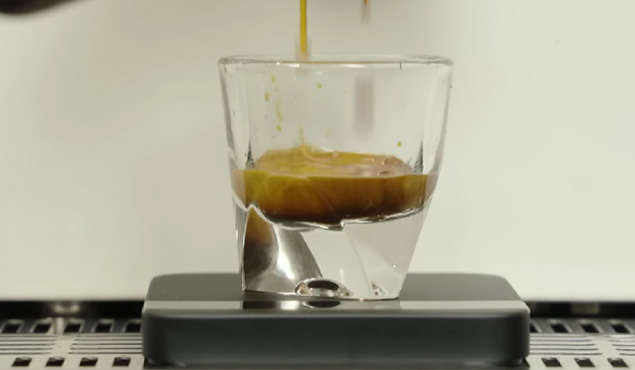
Caffeine Content
So, how much caffeine is there in cold brew and espresso?
Since the coffee beans are steeped for a longer period in a cold brew, the caffeine content is higher than that of its competitors, like an iced coffee.
A standard 16-ounce coffee cup of a cold brew consists of 245-250 mg of caffeine. In comparison, a single ounce of espresso contains 67-70 mg of caffeine. And most coffee shops serve espressos in a 2-oz glass, which means there is approximately 134-140 mg of caffeine in a standard 2-oz espresso coffee cup.
This means an espresso has higher caffeine content when it comes to espresso vs. cold brew. So, choosing an espresso is a good idea if you want an extra caffeine punch in your drink.
Grinding Size
It is common for people to confuse the grind size of the beans used in traditional coffees with espresso. But, in reality, espresso is made with highly fine-grounded dark roast beans, so they can be tamped quickly into the espresso machine when poured into the portafilter.
Doing so helps build the required pressure inside the coffee machine when the water is passed through the grounds and extracts more flavor from the coffee beans.
Contrastingly, a cold brew requires medium or coarsely ground coffee beans to make a perfect coffee cup. This is because fine and compact coffee grinds will over brew the cold coffee since they are soaked for a more extended period.
Brewing Time
This is one of the primary differences between cold brew and espresso drinks.
A cold brew takes a minimum of 12 hours to an entire day to brew. This is what makes a cold brew different from a typical cold coffee. The water requires more time to interact with the coffee beans and extract maximum flavor.
On the other hand, espresso can be made quickly, taking less than two minutes and only about 25-30 seconds to steep in the water.
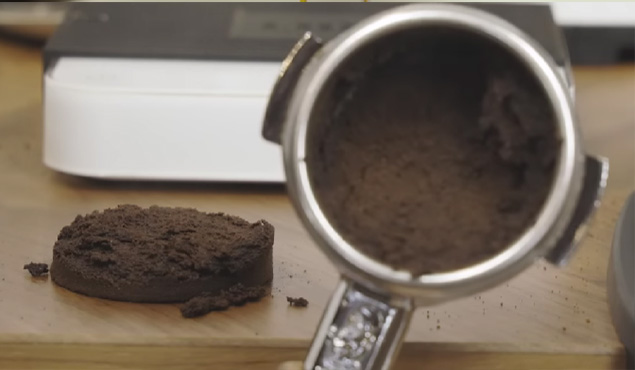
Roast Level
In an espresso, the coffee is roasted dark and deep, with intense notes, thus having a vibrant appearance with a more pungent coffee flavor.
We recommend using dark roast, fresh coffee beans for espresso because flavor extraction works perfectly with deeper roasts, as the coffee beans fully caramelize, thus boosting the espresso’s flavor.
On the other hand, the roast of cold brew depends on the drinker’s taste preferences. You can use medium, blonde, or light roast beans according to your preferred taste.
However, we recommend using medium roast since the coffee is steeped for the entire day, so the light-to-medium roasted coffee beans are perfect for extracting full flavor for the cold brew.
Acidity
Because of the greater concentration of coffee in cold brew, it has a higher acidity than espresso. In order to make espresso, hot water is pushed through finely-ground coffee beans, producing a thick, concentrated drink covered in crema.
It depends on the type of coffee bean or roast that is used, whether either drink has high acidity or not. Some coffee beans produce more acidic cups of coffee, while others have a milder flavor.
Your cold brew coffee could also become weaker and more acidic if you don’t steep it at the right time.
Espresso coffee is no different. Your espresso may taste acidic if you don’t grind the coffee correctly or if you don’t use the right water temperature.
The majority of the time, if everything goes smoothly, you will end up with a delicious coffee cup at home!
Health Benefits
Regarding the health benefits of cold brew vs. espresso, the cold brew is a healthier drink. A cold brew consists of more antioxidants because the brewing method of a cold brew helps preserve more and more antioxidants from the coffee beans.
However, espressos also consist of a few health benefits, but not as much as a cold brew. But having both drinks will help increase your focus and clear your mind.
In addition, cold brews also help in losing weight and improve cholesterol levels if consumed regularly.
Though cold brew and espressos are healthy, they also have a few adverse health impacts. For example:
- The caffeine content: When consumed in moderation, caffeine intake can help boost immunity and sharpen your mind. But if you are sensitive to caffeine, having an espresso is a good idea instead of a cold brew since it contains more caffeine.
- Acidity: If not made correctly, the cold brew, as well as an espresso, may result in a highly acidic drink that can be harmful to your teeth.
Water Temperature
Due to the cold or room temperature water it uses, cold brew coffees have a lower water temperature than espressos. As a result, people experience less “jittery” feelings after drinking, unlike espressos, because it is easier on their stomachs, thus preventing pain and bloating.
Espresso is made with water that has a temperature of around 95 degrees Celsius (about 200 degrees Fahrenheit). As a result of this higher temperature, more coffee oils and flavors are extracted, which can give the drink a more robust flavor.
An espresso’s signature crema is also created by the higher water temperature, which is mostly absent in a cold brew.
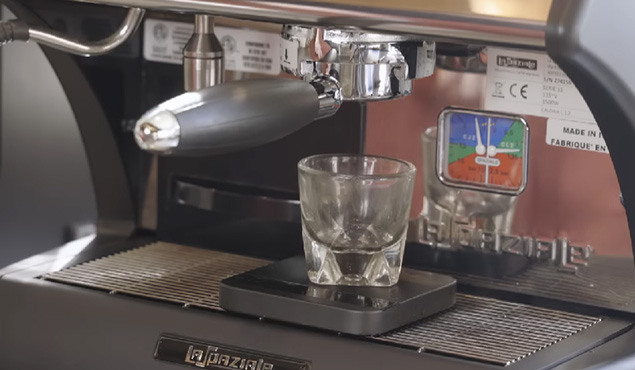
Cost in Cafes
A key difference between these two drinks is their price at your local coffee shop if you are a regular visitor.
The prices of espresso and cold brew on the coffee shop menus can vary depending on the cafe’s popularity but are increasing each year as more and more people are becoming coffee lovers.
However, an espresso shot generally ranges from $2-4, whereas a cold brew costs between $4-6 in most coffee shops.
That is comparable to the cost of a drip coffee or French press coffee, which generally costs $1-2.
Due to the long extraction process and the use of more coffee beans, cold brew concentrate costs more. On the other hand, Espresso is quick to make and can be done within just a few minutes with an espresso machine, thus costing less than a cold brew.
In contrast, you’ll pay about the same for a cold brew coffee if you order something with an espresso base, such as a latte or cappuccino.
Coffee Consistency
Time to talk about the consistencies of both drinks. Cold brew coffee and espresso have different water properties, and espresso is less watery.
Water is forced through the coffee grounds by the espresso machine with a lot of force, which makes the drink more concentrated and compact.
When making a cold brew, there is no pressure to hold the coffee grounds together, so the water seeps through unevenly. Consequently, the coffee becomes less concentrated and watery.
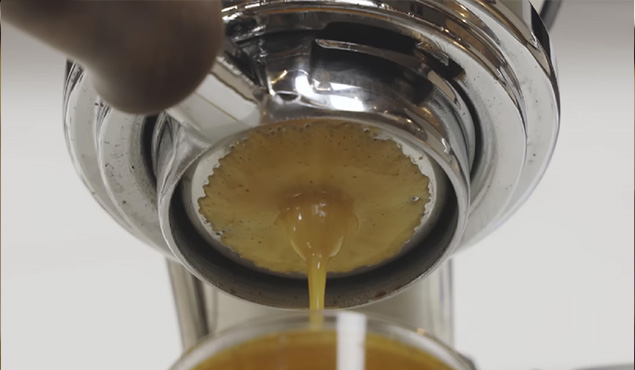
The bottom line: Which one is better?
Cold brew vs. espresso can be distinguished by the methods they are made.
Despite its time-consuming nature, cold brewing requires very little effort to prepare and uses coarse-ground coffee beans. Conversely, espresso is brewed with finely ground coffee beans within two minutes or less.
Cold-brewed coffee is more robust than espresso because it is brewed over a longer period of time, and you will noticeably get more caffeine in each drink. However, espresso has an intense bitter taste attributed to the different ground coffee beans and the hot water used to prepare it.
Taste vs. strength is a matter of personal preference of coffee drinkers, but hopefully, you now have enough information to make an informed decision about espresso versus cold brew.
FAQs
Is cold brew stronger than espresso?
Compared to espresso, cold brew coffee is stronger. Since the coffee is made by steeping coffee grounds in cold water for a longer period, it contains more caffeine., thus resulting in a smoother texture but a bitter taste.
Is espresso or cold brew easier on the stomach?
A cold brew is much easier on the stomach for most coffee drinkers, giving a less jittery feeling, unlike an espresso, because it is brewed in cold water and is lighter in consistency with more water content.
Why is cold brew coffee healthier for you?
Though it all depends on your taste and strength preferences, a cold brew is still a better option if you are looking for a healthier drink. It is packed with antioxidants and can help you lose weight, boost immunity, and improve cholesterol levels if consumed regularly.
Is cold brew good for gut health?
Since a cold brew does not have a bitter taste like an espresso shot, it is far less acidic than a regular cup of coffee. This means it does not aggravate the gut lining much, as compared to espresso or traditional coffee.
